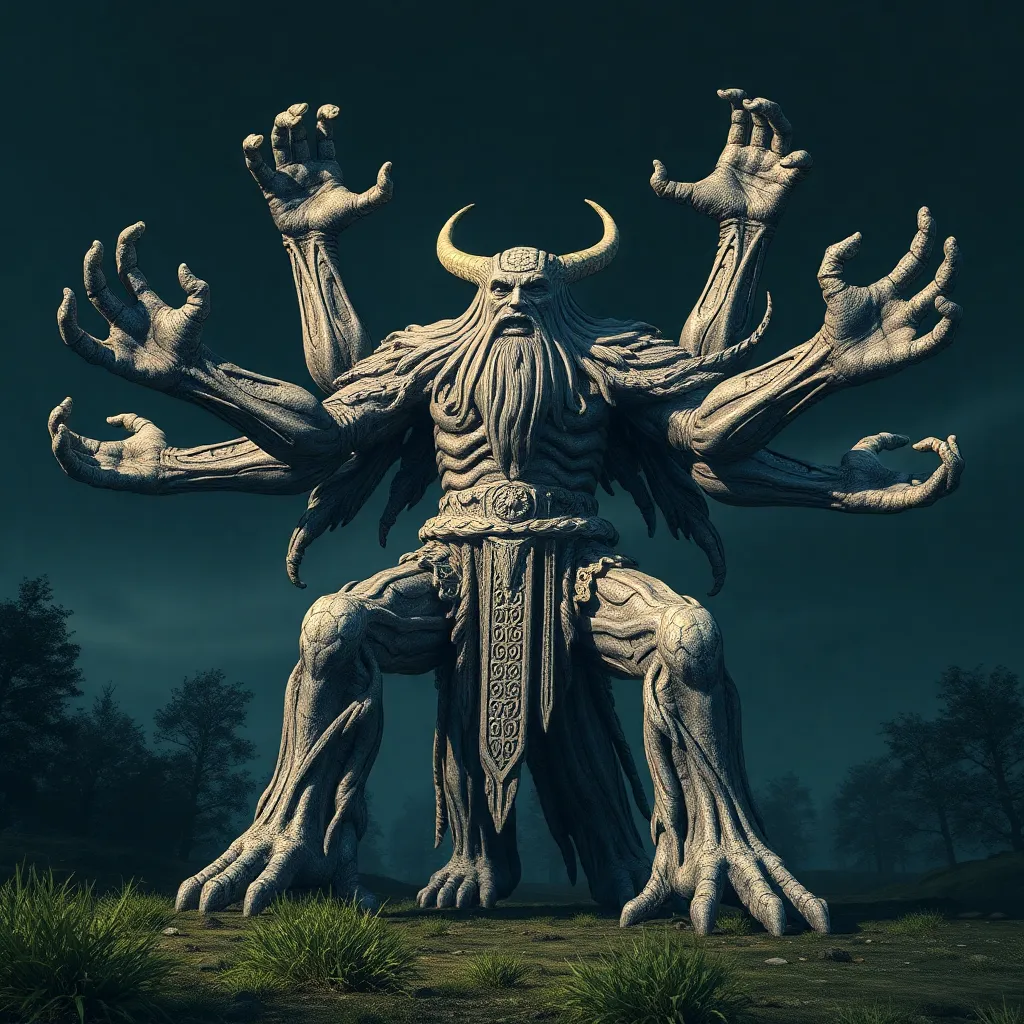The Hundred-Handed Giants in Celtic Mythology: A Search for Similar Beings
I. Introduction
Celtic mythology is a rich tapestry of stories and legends that reflect the beliefs, values, and cultural heritage of the Celtic people. It encompasses a wide range of deities, heroes, and fantastical creatures, each with their own significance and narrative. Among these beings are the enigmatic Hundred-Handed Giants, figures that capture the imagination with their extraordinary attributes and roles within the mythological framework.
This article aims to explore the Hundred-Handed Giants, delving into their origins, characteristics, and roles in Celtic myths. Additionally, it will compare these giants to similar beings found in other mythologies, highlighting the universal themes and motifs that connect cultures across time and space.
II. The Origin of the Hundred-Handed Giants
The Hundred-Handed Giants, also known as the Hecatoncheires, have their roots in ancient mythologies. In Celtic lore, they represent primordial beings that embody chaos and strength. Their historical context is intertwined with the creation myths of the Celts, where they often symbolize the tumultuous forces of nature.
One key figure associated with these giants is Briareus, who is often referenced in Greek mythology but has parallels in Celtic narratives. Briareus, known for his immense strength and a hundred hands, serves as a significant figure representing the overwhelming power of the giants. In Celtic cosmology, the giants are not mere antagonists; they embody the chaotic energies that exist at the dawn of creation and play a crucial role in the balance of the universe.
III. Characteristics of the Hundred-Handed Giants
The Hundred-Handed Giants are distinguished by their striking physical characteristics and formidable powers. Described as having a hundred arms and an equally impressive number of eyes, they are often depicted as colossal beings, towering over other creatures in the mythos.
The symbolism of their hundred hands is multifaceted. It can represent:
- Limitless strength and power
- The ability to manipulate and control the chaotic forces of nature
- A connection to the earth and the cosmos, bridging the gap between the two
In myths and tales, these giants are portrayed as both creators and destroyers, reflecting the duality of their nature. They often appear in narratives that emphasize their might and the consequences of unchecked power.
IV. The Role of the Hundred-Handed Giants in Celtic Myths
The Hundred-Handed Giants play a pivotal role in various Celtic myths, often serving as formidable adversaries to the gods and heroes of the pantheon. In major myths, they are depicted as the forces that the gods must contend with, showcasing their strength and chaos.
Interactions between the giants and other divine beings are common, illustrating a dynamic relationship that shapes the narrative structure of Celtic mythology. For instance:
- The giants may pose a threat that requires divine intervention.
- They may represent obstacles that heroes must overcome to achieve their quests.
Overall, the presence of the Hundred-Handed Giants adds depth to the stories, symbolizing the challenges inherent in the struggle between order and chaos.
V. Comparative Analysis: Similar Beings in Other Mythologies
When examining the Hundred-Handed Giants, it is essential to consider similar beings in other mythologies. One notable comparison is with the Hecatoncheires in Greek mythology, where Briareus stands out as a powerful figure embodying strength and chaos.
Furthermore, multi-armed deities in Hinduism, such as Durga and Shiva, also share thematic elements with the Hundred-Handed Giants:
- Durga, often depicted with multiple arms, symbolizes the strength needed to combat evil and restore order.
- Shiva, a complex deity, also embodies creation, destruction, and the balance of the universe.
Across various cultures, other mythological beings with multiple limbs serve to illustrate similar themes of strength, chaos, and power, highlighting the shared human experience of grappling with nature and the cosmos.
VI. Thematic Connections Across Cultures
The symbolism of multiple arms in mythology often signifies more than just physical strength; it embodies deeper themes. These include:
- The duality of creation and destruction
- The concept of chaos as a precursor to order
- The representation of divine power and intervention
The cultural significance of giants in folklore transcends individual myths, suggesting a collective fascination with beings that challenge the boundaries of human experience. Giants often represent the fears and aspirations of societies, serving as metaphors for the forces of nature and the unknown.
VII. Modern Interpretations and Representations
In contemporary literature and media, the Hundred-Handed Giants have found new life in various forms. They appear in fantasy novels, films, and art, often reimagined to fit modern narratives while retaining their mythical essence. These representations can take many forms, including:
- Fantasy novels where giants play a crucial role in the struggle between good and evil.
- Films that depict epic battles involving giant creatures.
- Art that explores the themes of chaos and strength through visual representations of multi-limbed beings.
The influence of these giants on popular culture highlights their enduring legacy and the fascination they evoke in the human imagination.
VIII. Conclusion
In summary, the Hundred-Handed Giants of Celtic mythology represent a profound exploration of themes such as strength, chaos, and the primordial forces of creation. Their origins, characteristics, and roles in myths unveil a rich narrative that resonates across cultures.
The enduring legacy of these giants invites further exploration into their connections with similar beings in other mythologies, emphasizing the universal themes that bind humanity’s storytelling traditions. As we continue to delve into the depths of mythology, we uncover not only the stories of giants but also the shared experiences and values that shape our understanding of the world.



